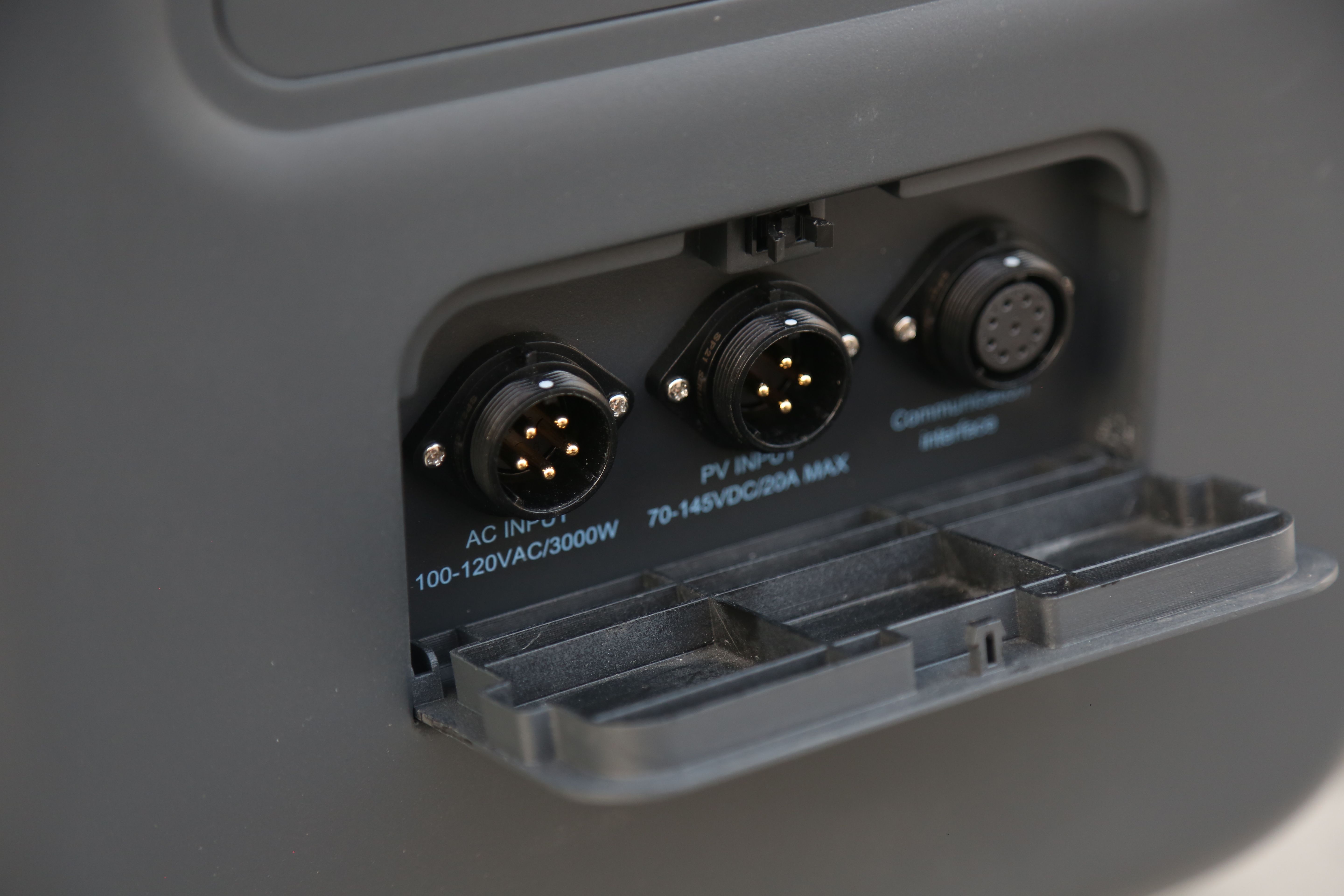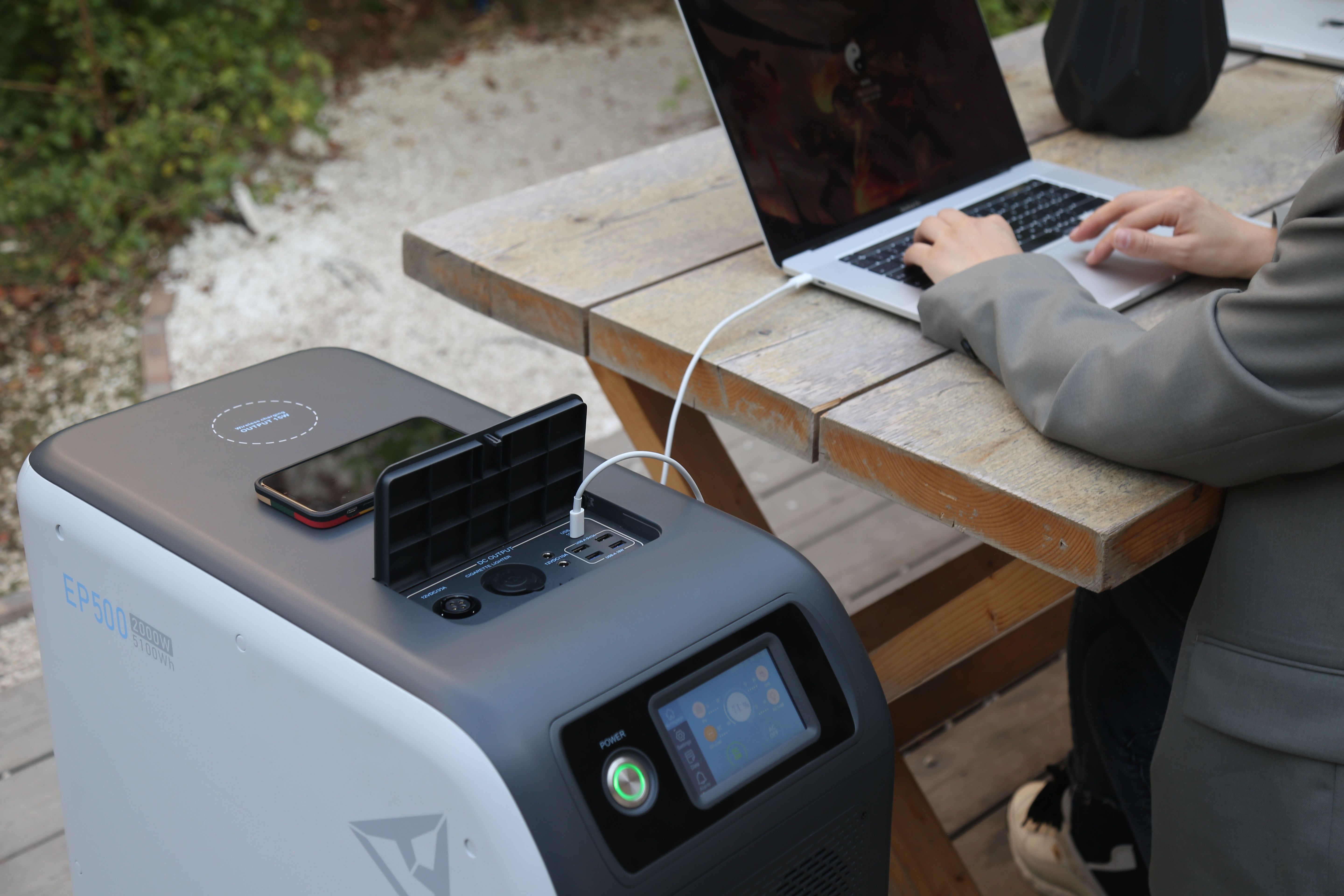Whether you’re camping, living on the beach, or simply concerned about power outages, a backup power solution makes sense. But what if it runs out of power when you’re on the road or your home is without power for several days? You need something you can recharge easily, capable of using fossil fuels or renewable sources of energy.
You need a Bluetti EP500—and that’s not the only reason why.
Why You Need a Portable Backup Power Station

Just a few months ago it would have seemed insane for anyone with a reliable electricity connection to need a portable backup power station.
Advantages of a portable backup system:
The ability to power or recharge almost anything
Powering your home in emergencies such as outages
Perfect for camping
A must have for life on the road (“vanlife”) and off-grid existence
Disadvantages of portable backups include:
They’re expensive
They don’t necessarily hold enough charge for all your electrical equipment
Charging from solar power is slow
If you’ve been planning on buying a portable backup station, you might have hit the perfect time to grab a premium off-grid backup power system.
Ideal for home, life on the road (aka “vanlife”), or any other off-grid lifestyle, the Bluetti EP500 will power everything. (Well, maybe not your EV, certainly not to any practical level.)
While you might not necessarily think that a system like this is particularly useful to you right now, there is plenty of evidence to suggest that having a couple of days’ worth of electrical storage ready to use at a moments’ notice can be described as a good thing.
The Off-Grid Life: What’s It About?
Living off-grid has long been associated with “prepper” culture or some unreasonable disassociation from society. But as politicians and power networks disassociate from the public and focus on urban areas, things have changed.
Now, having a portable battery storage solution that can power “all the things” doesn’t come with a delivery of tinfoil from your local milliner. It comes with the understanding that you’re planning for every eventuality.
While some off-gridders don’t use any modern technology, this probably doesn’t describe you. You might have a family to provide for when the power goes down. Alternatively, your camping trip might benefit from lights, recharged mobile devices, and a low-carbon grill.
That’s when a system like the Bluetti EP500 portable backup power station comes into its own.
The Bluetti EP500 Supports Up To 1.2kW Solar Charging
The size of a small suitcase, the Bluetti EP500 has an incredible maximum capacity of 5100Wh. Its output is rated 2000W AC, with a 4800W surge.
Power is provided by lithium-based LiFePO4 battery cells, each with ultra high durability. The Bluetti EP500 has UPS (uninterruptible power supply) support—it can be integrated into your home circuit with little problem and run your appliances. While UPS systems are popular for computers and servers, it’s good to see the technology’s use widened.
This portable power solution has various recharge options. You might use the standard AC outlet from the wall or connect it to your vehicle’s cigarette lighter port. Lead-acid batteries can charge it up, as can a gas-fired generator.
Most significant, however, is the ability to charge from a solar panel array. Up to 1200W @ 55-145V with MPPT is supported, with a full recharge taking as little as four hours. Furthermore, the Bluetti EP500 can also be charged from solar and AC simultaneously, handling up to 1800W and charging in just three hours.
As you can see, this makes the EP500 perfect for use as an emergency power backup at home and as a power supply on the road.
Features of the Bluetti EP500

You probably already know that several portable backup power systems are on the market. So why choose the Bluetti EP500?
Well, the specification you read above means that this is a feature-packed power supply. To start with, the 5100Wh high-capacity storage is good for at least 6000 charge cycles. This level of longevity means that you can rely on the system for years.
Furthermore, the Bluetti EP500 has a variety of port options.
On the top, there’s a single 12V cigarette lighter port, useful if the only phone or GPS charger you have is the one you use in your car. There’s also 1x 100W USB-C port, 2x USB-A ports, and 2x USB-A quick charge ports. For other mobile device charging, the Bluetti EP500 features dual wireless charging pads. Finally, it provides dual 12V/10A DC outlets and a single 12V/30A RV socket.
Meanwhile, the front of the Bluetti EP500 has 4x 100V~120V AC Outputs (US) or 3x 220V~240V AC Outputs (UK/EU/AUS), the AC input for recharging the power station, 1x PV Input and T500 Input, and a communication interface.
Wi-Fi and Bluetooth are also included for remote management of the Bluetti EP500, which is managed by an ARM processor DSP (Digital Signal Processing) functionality for greater safety and reliability. The touchscreen display, meanwhile, tells you everything you need to know about the stats of the Bluetti EP500 and the connected devices.
As if all that wasn’t enough, the power station has 24/7 outage protection, plug-and-play charging for almost any device, and grid surge protection. There is also UPS (Uninterruptible Power Supply) functionality. This is a feature more commonly found in server rooms and high-spec computer systems (gamers, crypto miners, etc.,). In short, it means that when a power outage hits, the UPS will kick in instantly when integrated with your home supply. This ensures that devices don’t shutdown without warning.
Need more power than a single Bluetti EP500 portable backup station can provide? Don’t worry—it can be paired with a second unit via Bluetti’s Voltage Fusion Box Output unit.
What Can You Power With a Bluetti EP500?

With so many USB ports mounted on the Bluetti EP, you’ve probably gathered that you can recharge all the usual kit. Phones, tablets, computers, satnav, e-readers, and other hardware with built-in batteries can be recharged.
But what about tech that doesn’t include batteries?
Well, the Bluetti EP500 is designed to handle those, too. If you’re hungry, an electric stove can be powered, and if you need to get changed, your electric clothes dryer can also be plugged in.
For those cold nights, a space heater or two might be plugged into the power station. And if things get too hot during the day, the Bluetti EP500 will also power your air conditioning unit.
Perhaps the question should have been “what can’t you power with a Bluetti EP500″…?
Why You Should Choose the Bluetti EP500
Various backup power station solutions are available to buy right now. So why would you choose the Bluetti EP500?
Let’s look at a comparable alternative, the upcoming Tesla Powerwall 2. Costing nearly $13,000 for the devices and installation, this provides 13.5kWh at 5000W of power. So, for similar power, you would need three Bluetti EP500 units, at a total cost under $9,000.
But most importantly, the Bluetti EP500 is plug-and-play. Because it’s on wheels, the unit is easy to position and use anywhere. Need more than the Bluetti EP500 can offer? Don’t worry—there’s a more powerful alternative, the Bluetti EP500Pro.
And if you think that maybe you can’t afford it, why not consider entering the massive worldwide giveaway to win a Bluetti EP500?
Prepare for Every Eventuality With a Bluetti EP500

With support for renewable recharging, wireless upgrades, and an enormous 5100Wh capacity, the Bluetti EP500 is a monster of portable backup power. You can literally power your life with this device, which will give you enough juice to run a home for a couple of days in the event of a severe outage.
The Bluetti EP500 is available with super early bird perks starting at just $2799 (or £2005) on Kickstarter.com.
Once you’ve tried it, you won’t want to be without it.
Article Source and Credit makeuseof.com https://www.makeuseof.com/bluetti-ep500/ Buy Tickets for every event – Sports, Concerts, Festivals and more buytickets.com

Leave a Reply
You must be logged in to post a comment.